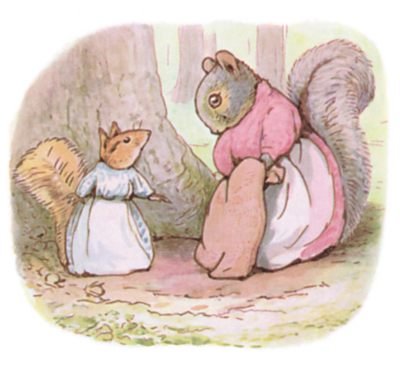British Heritage
Remember, Cherish, Learn.
beta
Beatrix Potter
A Legacy of Nature, Literature, and Art.
Contribution to British Heritage
Beatrix Potter, an English writer, illustrator, natural scientist, and conservationist, left an indelible mark on British heritage through her enduring contributions to children's literature, her significant impact on the preservation of the Lake District's landscape, and her pioneering work in mycology. Born on 28th July 1866 into an upper-middle-class family, Potter's upbringing isolated her from other children, allowing her to cultivate a deep love for nature, animals, and art. Her timeless children's books, including "The Tale of Peter Rabbit," revolutionized the genre with captivating illustrations and engaging storytelling, enriching the literary heritage of Britain and captivating generations of young readers.
Success and Literary Contributions
Beatrix Potter's literary success began with the self-publication of "The Tale of Peter Rabbit" in her thirties, and it marked the start of her remarkable career as a children's book author and illustrator. She went on to write thirty books, with her best-known works featuring twenty-three delightful children's tales. Potter's stories were distinguished by their non-didactic nature, vivid illustrations, and imaginative portrayal of animal characters, making them beloved classics that have continued to sell worldwide, translated into numerous languages and adapted into various media forms, including songs, films, ballet, and animations.
Additionally, Potter's innovative merchandising of her characters and stories paved the way for modern licensing and spin-off merchandise in the publishing industry. Her creation of the Peter Rabbit doll and other related products not only demonstrated her entrepreneurial acumen but also enabled her to generate substantial income, which further contributed to her legacy.
Preservation of the Lake District Landscape
Apart from her literary accomplishments, Beatrix Potter's devotion to land conservation and preservation was instrumental in shaping the British heritage. In 1905, she purchased Hill Top Farm in Near Sawrey, located in the Lake District, with a vision of preserving the unique hill country landscape she cherished. Over the following years, she acquired additional farms, expanding her land holdings and enabling her to protect vast swathes of the Lake District's pristine countryside.
Potter's commitment to preserving traditional farming methods and her efforts to protect the region's natural beauty made her a key figure in the founding of the National Trust for Places of Historic Interest or Natural Beauty. By bequeathing almost all her property, including over 4,000 acres of land and sixteen farms, to the National Trust upon her death, Potter made a significant contribution to the conservation and continued preservation of the Lake District National Park, ensuring that future generations could enjoy the unspoiled beauty of the region.
Scientific and Artistic Contributions
Beatrix Potter's passion for the natural sciences, particularly mycology (the study of fungi), and her artistic talents converged in her scientific illustrations of fungi and other specimens. Her meticulous and accurate drawings earned her widespread respect in the field of mycology. Although she faced initial gender-based discrimination when attempting to present her research to the scientific community, her contributions were eventually recognized, and her paper on the germination of fungus spores received belated acknowledgement and an apology from the Linnean Society.
Potter's love for the countryside and its creatures inspired her artistic pursuits, with many of her illustrations featuring her beloved pets and the wildlife she observed in the Lake District. Her artistic style, influenced by fairy tales and folklore, became uniquely her own, endearing her work to readers and setting her apart from other illustrators of her time.
Legacy and Impact
Beatrix Potter's legacy is multi-faceted, encompassing her literary achievements, land conservation efforts, and scientific contributions. Her books continue to captivate and inspire young readers worldwide, remaining timeless classics of British children's literature. Through her philanthropic act of bequeathing her properties to the National Trust, she secured the preservation of the Lake District's natural beauty, solidifying her reputation as a conservationist and ensuring her lasting impact on British heritage.
Beyond literature and land conservation, Potter's pioneering work in mycology continues to be recognized and celebrated by scientists and enthusiasts alike. Her artistic legacy endures in her beautifully detailed illustrations, reflecting the charm and magic of the British countryside and its inhabitants.
In conclusion, Beatrix Potter's life and accomplishments exemplify the remarkable blend of artistic talent, scientific curiosity, and environmental stewardship. Her contributions to British heritage are immeasurable, leaving a lasting imprint on children's literature, the preservation of natural landscapes, and the world of mycology. Her legacy lives on, cherished by readers of all ages, and her dedication to the beauty and wonder of the natural world continues to inspire generations to come.
- Beatrix Potteren.wikipedia.org





